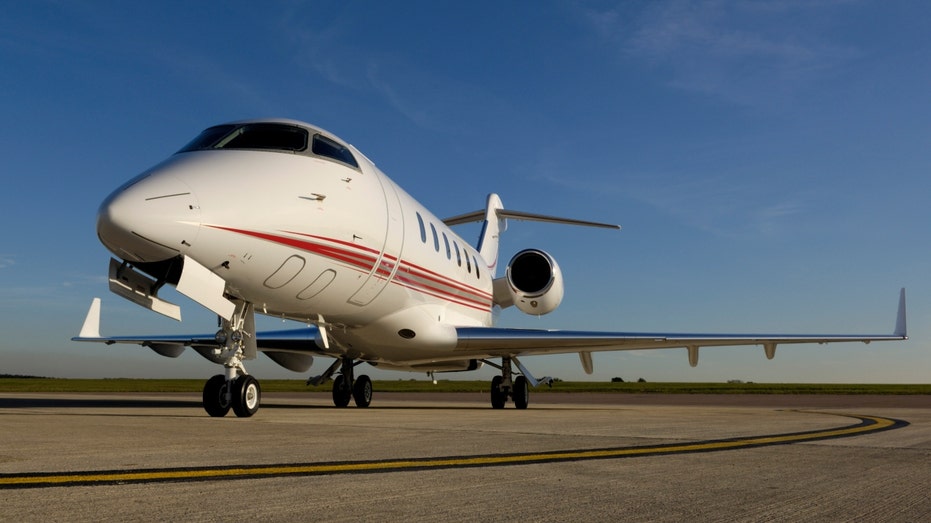Former Obama official died after pilot of Bombardier jet flipped switch, plane 'abruptly pitched up'
FAA, National Transportation Safety Board originally said aircraft encountered turbulence
Texas deputies respond to small plane crash; injuries unknown
Deputies and first responders in Texas responded to a small plane crash Friday. (Credit: KJTV)
Investigators said Friday a former Obama-era official traveling on a corporate jet was fatally injured after pilots disconnected a system used to stabilize the aircraft, causing it to abruptly pitch up.
The National Transportation Safety Board said the pilots were responding to several warnings in the cockpit of the Bombardier jet that diverted to a Connecticut airport March 3. They followed a checklist and turned off a switch that "trims" or adjusts the stabilizer, a control panel on the plane’s tail.
The plane turned nose-up at several times the force of gravity, then pointed lower before again turning upward before pilots could regain control, the report said.
BOMBARDIER BUSINESS JET PASSENGER KILLED BY TURBULENCE IDENTIFIED

A Bombardier Challenger 300 parked at an airport. (Aviation-images.com/Universal Images Group via Getty Images/Getty Images / Getty Images)
Pilots told investigators they did not encounter turbulence as the NTSB had suggested in a preliminary assessment the day after the incident.
Last year, the Federal Aviation Administration instructed pilots flying the same model of Bombardier aircraft to take extra preflight measures after trim problems had been reported. Trim problems can be responsible for buffeting or altitude changes.
Bombardier, the jet's Canadian manufacturer, said it is cooperating with federal investigators and has launched a probe of its own. It told The Associated Press it stands by its aircraft.
"Bombardier is deeply saddened by this tragic event," the company said in a statement to FOX Business. "We extend our sincerest sympathies to all those affected by this accident."
The Challenger 300 plane, operated by Missouri-based Conexon LLC, was traveling from Keene, New Hampshire, to Leesburg, Virginia, before diverting to Bradley International Airport in Connecticut. Shortly after the in-flight incident, the crew was alerted to the medical emergency, and the pilot did not reengage the autopilot for the remainder of the flight.

Dana J. Hyde was 55 years old when she succumbed to her injuries at a Hartford, Connecticut, hospital. (Millennium Challenge Corporation / Fox News)
The passenger who died, Dana Hyde, 55, was a prominent attorney who worked in both the Obama and Clinton administrations and served as counsel to the 9/11 Commission, according to her 2018 biography. Hyde was also a former CEO of Millennium Challenge Corporation, an independent U.S. government foreign aid agency.
It was unclear if Hyde was belted in her seat or up and about in the cabin of the jet. She succumbed to her injuries later in the day at a Hartford, Connecticut, hospital.
The pilots aborted the initial takeoff because a plastic cover was not removed from a pitot tube, which determines airspeed, and they took off with a rudder limiter fault alert on.
GET FOX BUSINESS ON THE GO BY CLICKING HERE
Another warning indicated autopilot stabilizer trim failure. The plane abruptly pitched upward as the pilots moved the stabilizer trim switch from primary to off while working through procedures on a checklist, the report said.

Dana Hyde, CEO of the Millennium Challenge Corporation, participates in the Ghana Compact signing ceremony during the U.S.-Africa Leaders Summit at the State Department in Washington Aug. 5, 2014. (AP Photo/J. Scott Applewhite, File / AP Newsroom)
"As soon as the switch position was moved, the airplane abruptly pitched up," the report said. "The [pilot] reported that his left hand was on the flight controls and his right hand was guarding the right side of the flight controls. He immediately with both hands regained control of the airplane in what he estimated to be a few seconds after the airplane’s pitch oscillated up and down.
"During the oscillations, the [pilot] instructed the [second-in-charge] to move the stabilizer trim switch back to the primary position, which the [second-in-charge] accomplished."
CLICK HERE TO READ MORE ON FOX BUSINESS
The pilot in command logged 5,000 total hours and 88 hours in the Challenger 300. The second-in-command pilot accumulated 8,000 hours of total flight hours and 78 hours in the Challenger 300. Both held ratings needed to fly for an airline and only recently received their type rating in this type of Bombardier jet.
The Associated Press contributed to this report.





















